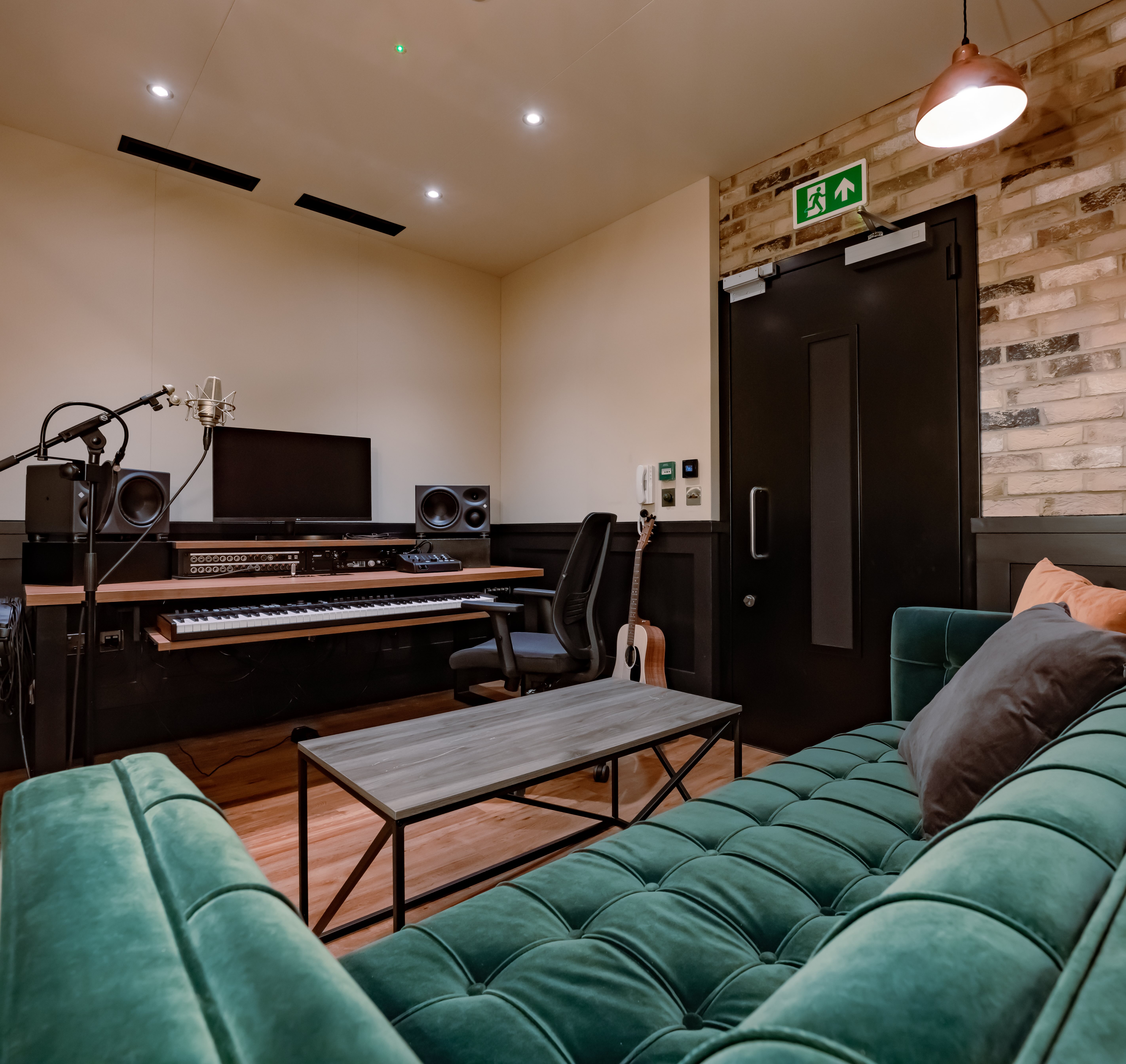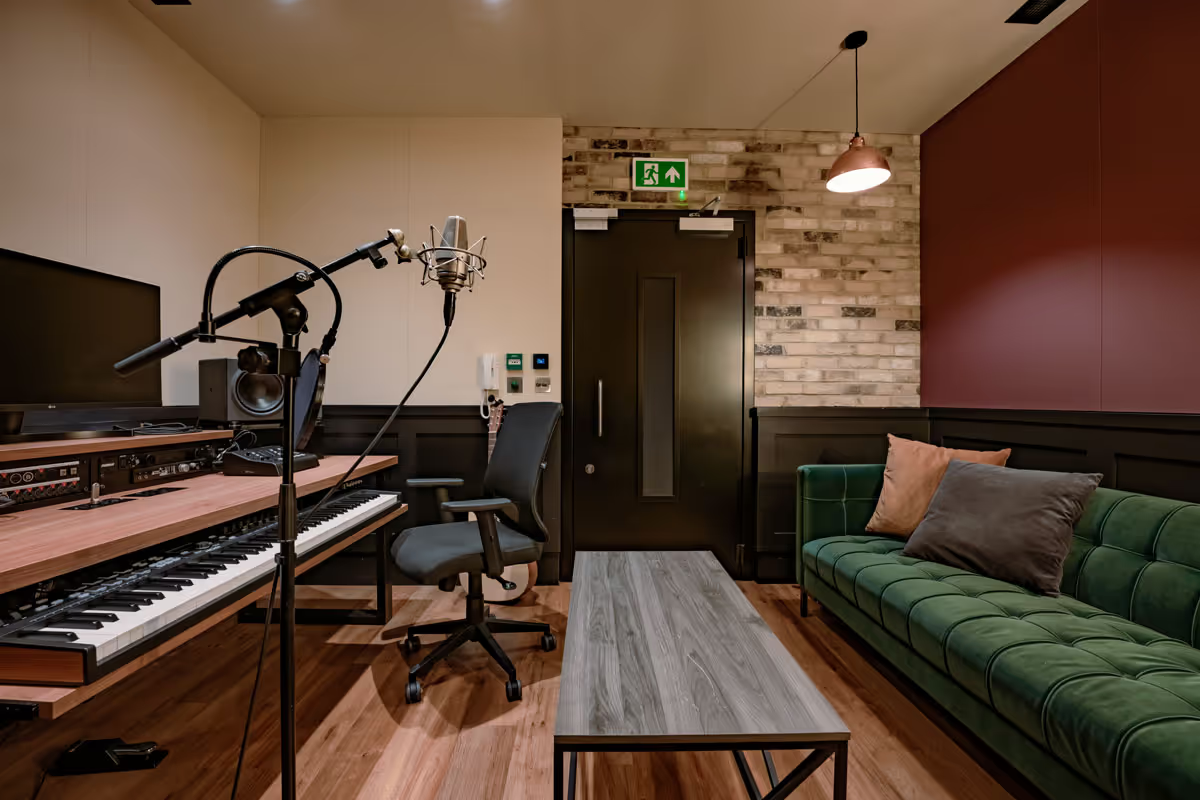What is Dolby Atmos? How it Works, Uses, Installation Guide
Dolby Atmos is an audio technology that elevates traditional surround sound to an immersive three-dimensional experience. In this article, we'll go through everything you need to know about this exciting technology.
Dolby Atmos is an object-based audio format that places sounds precisely in 3D space (including overhead) so you hear audio move around you with lifelike accuracy.
Unlike traditional channel-based surround, Atmos adapts to your speakers or headphones, creating a bigger, clearer, more immersive soundstage for movies, music, and game
What is Dolby Atmos?
Dolby Atmos is a spatial audio technology that encodes sounds as objects with metadata for position, movement, and size, then renders them in real time to your setup, adding height to the horizontal field.
The result is a scalable three dimensional mix that delivers precise placement, smooth motion, and immersive listening across cinemas, home theatres, soundbars, and headphones.
This guide was created with input from the TYX Studios team in London, home to purpose built Dolby Atmos rooms and Dolby certified engineers.
How does Dolby Atmos work?
It's no stretch to say that this audio technology has changed the game. Moving away from the traditional channel based approach, people can now experience a more dynamic sound. Traditional surround speakers can confine audio to a flat plane. Conversely, Dolby Atmos enabled speakers create a three dimensional soundscape. It allows sounds to move freely in three dimensional space, providing powerful immersion.
Here is how it works:
Audio objects and bed
Atmos treats many sounds as “objects” with metadata for position, movement, and size, alongside a 7.1.2 bed for foundational elements. This enables precise placement and motion anywhere around and above the listener. professionalsupport.dolby.com
Height and overhead
Systems add a vertical dimension with overhead speakers or up firing speakers. On headphones, a binaural render recreates the sense of height.
Real time rendering
A Dolby renderer maps objects to whatever speakers or headphones you have in real time, preserving the intent of the mix across different layouts.
Scalability and adaptability
Whether it is a large cinema, a home theatre, a soundbar, or headphones, Atmos delivers a consistent and immersive experience.
Dolby Atmos vs a typical surround sound system

Unlike fixed channel based formats like 5.1 or 7.1, Atmos is object based, so sounds are not locked to channels and can move smoothly anywhere in the 3D field, including overhead. Traditional systems distribute sound across a single horizontal plane.
However, Dolby Atmos includes speakers above the listener, allowing sounds to move overhead. This is particularly noticeable in scenarios like rain scenes, where the sound can come from above, enhancing realism.
For example, with a conventional surround system, you would hear raindrops around you. Conversely, with Dolby Atmos, you can hear them falling from above, providing a more natural and lifelike audio experience.
A short history of Dolby Atmos
Today, there are hundreds of Atmos titles in circulation. But where did it all start? Initially designed for commercial cinemas, the first film to feature Dolby Atmos was Brave from Pixar, released in June 2012.
The technology provided filmmakers with new creative freedom to direct sound with precision, enhancing the storytelling and viewer immersion.
Following its success in cinemas, Dolby expanded into home entertainment, personal devices, and content creation, transforming the listening experience across movies, music, and games.
It has since become a standard in immersive audio for its ability to create a lifelike audio experience, bringing sounds to life in a way that envelopes the listener.
What is Dolby Atmos used for?
This technology has gone from strength to strength and is now used for a wide range of different media. This includes:
Cinema
.jpeg)
Dolby Atmos revolutionised cinema audio. By allowing audio to move freely around and above the audience, Atmos creates an incredibly immersive environment that significantly enhances the cinematic experience. This allows filmmakers to pinpoint sounds with incredible accuracy so every whisper, footstep, or explosion contributes to a more realistic and engaging story.
Home Entertainment
Dolby Atmos is no longer limited to cinemas. It can transform your living room into a cinema like experience with ceiling speakers or upward firing soundbars.
An Atmos capable AV receiver or processor, or an Atmos soundbar, unlocks height effects and object rendering at home and makes even regular TV shows more engaging, with sounds flowing naturally around the viewer.
Gaming
.jpeg)
For gaming, Dolby Atmos introduces a critical advantage: spatial awareness. It lets players hear the direction of approaching enemies or environmental changes with precision, providing a more immersive and realistic experience.
On Windows and Xbox, enable Atmos through the Dolby Access app; some features such as Atmos for Headphones require a license.
Mobile and streaming services
Dolby Atmos is available on mobile devices and major streaming services, so you can enjoy immersive audio wherever you are. Services such as Netflix require a plan that supports Ultra HD, a compatible device, and Atmos capable audio.
Through smartphones, tablets, or headphones, users can access a three dimensional soundscape that enhances movies, series, music, podcasts, and audiobooks.
Content Creation
For filmmakers and video producers, Dolby offers tools to craft soundscapes that pull viewers into the heart of the story. This is invaluable for dynamic soundtracks in films, documentaries, and even YouTube videos.
Music
Artists and producers can place instruments and vocals in three dimensional space, letting fans experience music with new clarity and depth.
Albums mixed in Atmos can feel as if you are standing in the studio with the artist.
For a behind-the-scenes look at our setup, watch the video below: a quick tour of how ORIA streamlines Atmos routing and monitoring at TYX.
Step by step guide to Dolby Atmos installation
Follow the steps below to create a comprehensive Dolby Atmos setup for your home theatre or portable devices.
1. Select an audio setup
Choose the type of setup that suits your needs, from a full AVR and speaker system such as 5.1.2 or 7.1.4 with height or overhead speakers, to a simpler setup using an Atmos enabled soundbar with up firing drivers.
2. Connections
Use HDMI from your sources to an Atmos capable AV receiver or processor, or directly to an Atmos soundbar. Prefer eARC or full bandwidth HDMI connections for the best format support.
3. Position speakers
Follow Dolby’s layout guidance for surrounds and height or overhead speakers, or ensure a clear, reflective ceiling path if you are using an up firing soundbar.
4. Media sources
Use Blu ray players with Atmos discs and streaming devices such as Apple TV 4K that offer Atmos content through services like Netflix and Disney Plus.
5. Content playback and settings
Enable Atmos on your AVR or soundbar and set your streaming device and apps to output Atmos. Calibrate levels and delays for the best performance.
6. Headphones
On Windows or Xbox, turn on Dolby Access for Atmos for Headphones to get a binaural render of Atmos mixes
What does the future hold for Dolby Atmos?
Reviewed 16 October 2025
Dolby Atmos is shifting from a nice-to-have to a default expectation. You can already feel it moving beyond home theatres into TVs, soundbars, cars, headphones, and even phones, while the tools to create Atmos mixes are getting simpler and more affordable.
That combo means more movies, more music, and more games taking full advantage of 3D sound, wherever you hit play. Streaming platforms continue to expand their Atmos catalogs, but the experience still depends on your device, plan, and listening setup.
As hardware, apps, and formats mature through 2025 and 2026, the gap between “studio” and “sofa” keeps narrowing.
TVs and wireless setups
Dolby Atmos FlexConnect is starting to show up on TCL’s 2025 QD-Mini LED sets (QM8K, QM7K, QM6K), letting the TV map and auto-calibrate compatible wireless speakers wherever you place them.
The result is a tidier living room and a surprisingly convincing height stage without running cables.
Competing and open formats
Keep an eye on Eclipsa Audio from Samsung and Google. It’s an IAMF-based 3D format rolling into 2025 Samsung TVs/soundbars (and YouTube on those TVs), which means more spatial options alongside Atmos, and healthy pressure for everyone to keep improving.
Creation tools
Avid’s move to integrate the Dolby Atmos Renderer directly into Pro Tools removed a lot of routing headaches. That change helped kick off the 2024–25 boom in Atmos music and post, and it keeps lowering the barrier for creators through 2026.
Soundbar landscape
Flagship bars keep getting wilder (more channels, smarter auto-calibration, tighter TV integration) while compact models sound better than ever. The net effect: Atmos that’s easier to set up, fits more rooms, and still delivers the “sound all around” moment
Premier Dolby Atmos suite in London

Our recording studios in London include a purpose-built Atmos Suite built in partnership with Dolby, designed for fully immersive mix sessions.
It features precision speaker management, Neumann 7.2.4 monitoring, and a powerful i7 Mac Mini, providing a seamless environment for spatial mixing and detailed sound placement.
Alongside this, our Playback Gallery is one of the only facilities of its kind in the UK, purpose-built for critical listening and final reviews in a controlled acoustic environment.
Whether you're working on music, film, or podcasts, you will have the tools and support needed to deliver in Dolby Atmos, with full creative flexibility through our dedicated Atmos mixing services.
Frequently Asked Questions
An object based spatial audio format that places sounds in 3D space, including height, for more immersive playback across cinema, home, mobile, and music.
You need a way to create height, either in ceiling speakers, up firing Atmos enabled modules, or an Atmos soundbar. Traditional 5.1 speakers alone will not deliver height effects.
Yes. With a compatible app or device renderer, Atmos is downmixed to binaural for any normal headphones, quality depending on the mix and renderer.
Not for streaming. ARC can carry Dolby Digital Plus Atmos. For lossless Dolby TrueHD Atmos from Blu ray or similar sources, you need eARC.
Major video streamers offer Atmos titles, and Apple Music, Amazon Music, and Tidal carry Atmos Music tracks, sometimes under different labels like Spatial Audio.
Both are object based. Atmos adoption is broader across streaming and soundbars; DTS:X is common on many Blu rays. Real world differences depend more on mixes and your setup.
Costs vary depending on how long you want to book the studio for:
Per Hour: £50
Half Day (5 hours): £250
Full Day Lockout (10 hours): £500
TYX members can receive up to 20% discount (depending on plan).
Yes, our engineers specialise in Atmos mixing as well as mastering. Contact our team to discuss your project requirements and we'll guide you through the best approach for your music.
















.avif)

